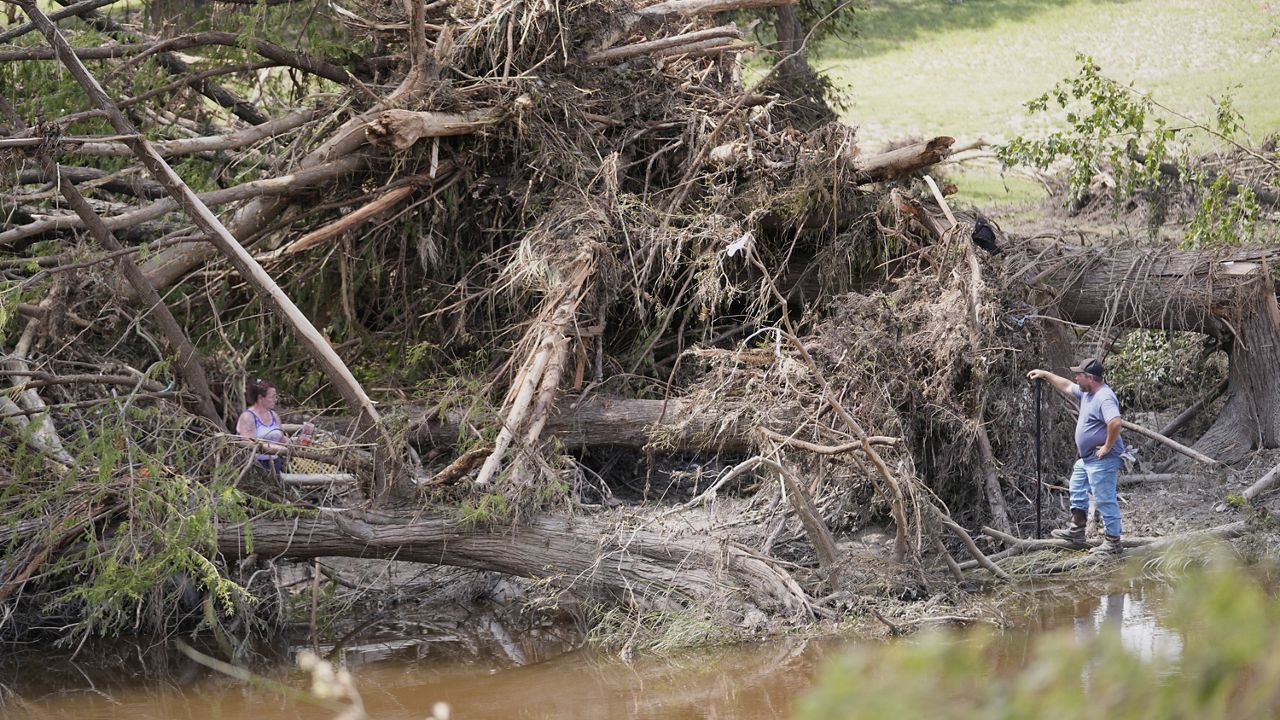The remnants of Tropical Storm Fred moved through the Carolinas Tuesday, dumping heavy amounts of rain and spinning off tornadoes in parts of western North Carolina.
A local state of emergency was declared early Wednesday afternoon for mountain communities, struggling to recover from the storm's impacts.
"The local State of Emergency also applies within the municipal limits of the City of Asheville, the Town of Weaverville, the Town of Woodfin, the Town of Black Mountain, the Town of Montreat, and the Town of Biltmore Forest," a Buncombe County government news release said.
Other areas such as: Haywood, Jackson, McDowell, Madison, Mitchell, Rutherford, Transylvania and Yancey counties all declared local states of emergency.
On Wednesday morning, the mountain communities in the west were still reeling in the storm's aftermath as multiple roads remained flooded, and a temporary shelter at an Asheville church opened to those who evacuated and were displaced by the storm, according to officials.
Gov. Roy Cooper also announced a state of emergency Wednesday afternoon due to impacts from Fred and the record flooding the storm caused.
“This state of emergency will allow our first responders to get into our affected communities quickly to save lives, restore power, remove debris and bring supplies,” said Governor Cooper in a news release. “North Carolina is strong and resilient, and we’re committed to helping people and businesses recover as quickly as possible.”
Fred made landfall as a tropical storm Monday on the eastern Florida panhandle, and stormed through the Southeast, dumping close to 10 inches of rain over some parts of North Carolina, according to weather authorities. There were also 47 tornado warnings across the Carolinas Tuesday, and several apparent tornado sightings in the state.
"There are also multiple road closures throughout the county. Among those road closures are significant closures on Old 70 and Highway 70 between Black Mountain and Swannanoa," according to a release.
By Wednesday afternoon, the governor announced that all major interstates were open, but many other roads remained closed, including 49 secondary roads. NCDOT teams are on the ground, actively working to get roads back in order, he said.
Other impacts from Fred included 50,000 people losing power during the storm. As of Wednesday afternoon, about 12,000 were still without electricity, the governor said.
High waters flooded homes, and about 98 people were rescued as the river rapidly rose from its bed, according to the governor, who said some people still remain missing.
"Haywood and Transylvania counties were especially hit hard last night, seeing as much as 12 inches of rain," Cooper said.
As the communities in the mountains grapple with the aftermath, about 250 rescuers are working to help people, traveling by boat and aircraft, the governor said.
"Because of flooding, the Swannanoa Fire Department and Buncombe County Emergency Services are advising people in the Grovemont Community to shelter in place," the Buncombe County government release says.
Government officials encouraged those in impacted areas to remain at home and reminded motorists not to drive through standing water on the roadway.
The emergency order allows officials to put more recovery plans in place, as well as coordinate with state and federal agencies on disaster relief.

Detours are in place for Asheville Rides Transit routes (N5, N1, N2, S1, WE1 and S5) due to flooded areas and fallen trees. Click here for transit service updates.
“Many thanks go out to our emergency services personnel and first responders, who worked all night to keep our community and neighbors safe during this dangerous storm,” said Buncombe County Manager Avril Pinder.
The Associated Press also contributed to this article.










